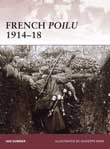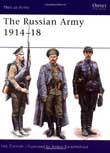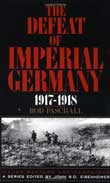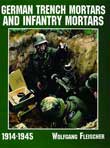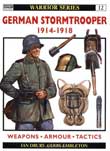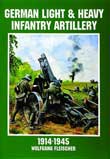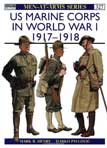

'Why,' the Kaiser enquired of Czar Nicholas in 1913, did he wish to ally himself with France when 'the Frenchman is no longer capable of being a soldier?' Indeed, during World War I (1914-1918) the French Army was in a state of disarray, plagued by indiscipline, mutinies and desertion. The ordinary French citizens that were called upon to defend their motherland, the Poilu, were disrespected and demoralized, and the infamous mutinies of 1917 by the Poilu were not protests against the war itself, but against how the war was conducted. The rebellions sent a stark warning, forcing a reform in the management of the war. Consequently, the performance of many French regiments improved and the Poilu went on to become the only European troops to fight the entire war within their own borders. Ian Sumner expertly charts the history of the Poilu, from the conscription of hundreds of thousands of men, through their training, to the horrors of the trenches and the fear of no-man's land, providing a fascinating insight into the events that led to the 1917 revolts. New artwork and diagrams illustrate the experiences of the soldiers as the comforts of civilian life were stripped away from them and the trenches became their homes.
Often overshadowed by the drama of its catastrophic collapse in the November 1917 Revolution, the Imperial Russian Army's record in 1914-16 included some notable victories. Its human qualities of patriotism and endurance were remarkable, and in 1916 the 'Brusilov Offensive' on the South-Western Front outdistanced anything that was being achieved in France. The variety and romance of its uniforms—infantry and cavalry, Guards and Line, Cossacks, armour and Air Service crewmen, even a priest—are splendidly captured here by Russia's leading military artist; and Nik Cornish's expert text is supported by tables of insignia and many rare photographs.
This book goes a long way towards showing how many of the conventional beliefs concerning WW1 are totally innaccurate. He dosen't diminish the loss of life but he does show that the generals in charge were no less capable than their WW2 counterparts. Much of what was practiced in WW2 started in WW1. Pascall builds a compelling case that the generals on both sides invented ingenious new strategies that simply failed in the context of a war of attrition. An outstanding contribution to the body of knowledge of World War One.
January 1917. On the Western Front the armies of Imperial Germany, Great Britain, and France were locked in grim stalemate. Repeated attempts by both sides to achieve breakthrough in the face of machine-gun fire, barbed wire, long-range artillery, and poison gas had brought only enormous casualties.The Defeat of Imperial Germany focuses on the innovative plans created by generals on both sides in their struggles to dislodge the entrenched enemy and to restore maneuver and victory on the Western Front. In a series of vivid analyses of successive offensives, Paschall examines the problems of command and what happened when the massed soldiery sought to carry out their orders. These strategies and tactics developed by the military leadership in 1917–1918, though largely failing to shatter the deadlock, would prove successful when implemented twenty years later in World War II.The first volume in the Major Battles and Campaigns series published under the general editorship of John S.D. Eisenhower, The Defeat of Imperial Germany has been designed for the "armchair strategist." Dozens of photographs, many never before published, as well as clearly drawn theater and battlefield maps help to make this book an outstanding, challenging, and original contribution to the history of the Great War.
Shown are the various caliber mortars used by the German infantry during World Wars I & II., over 70 b/w photographs, 8 1/2" x 11"
Okay, I bought this book (used) a few years back. It's okay, but has some inaccuracies. If you need a basic primer on the Sturmtruppen, then buy it... it's not that bad.
The first official German stormtroop unit was authorized on 2 March 1915 when the Supreme Command of the field army ordered the VIII Corps to form a detachment for the testing of experimental weapons and the development of approximate tactics that could break the deadlock on the Western Front. By the summer of 1915, stormtroop units were springing up throughout the German armies in the west, and by the end of 1916 official stormtroop battalions were established throughout the western armies, providing a deadly new threat for the Allies. This book examines the uniform, equipment and tactics of Germany's feared elites of World War I (1914-1918).
Reviewer: Mal Wright from Adelaide, South Australia.
This booklet, by Wolfgang Fleischer, is a bit misleading as the title leads one to expect more coverage of WW1. Instead it skips over the 1914-18 period and seems to use it more as an introduction to WW2. That is a shame as even though it does not mention many WW1 guns, those it does skip across are interesting weapons. After a couple of pages of fairly vague text on WW1 it goes into WW2 infantry guns in considerably more detail. Once again it is often tempting, but not very fulfilling. However the photographic coverage of WW2 Infantry guns is quite extensive. It should prove helpful to those wanting to model some of the weapons in detail and at the price is therefore a bargain. As a serious work on the subject, it is however lacking in technical data and comparisons. I give this booklet 3 stars for WW2 and would give it half a star for WW1. It is worth adding to your collection and won't break your budget.
Though the US Marines initially struggled to maintain their distinctive identity within the huge American Expeditionary Force in France, their unforgettable performance at Belleau Wood, Soissons, St Mihiel, Blanc Mont and the Meuse-Argonne established their reputation as 'the most aggressive body of diehards on the Western Front'. This book describes the organization of this formidable force during World War II, from 1917 to 1918, and details their uniforms, insignia and decorations, weapons and equipment. Numerous photographs and eight full colour plates vividly depict the various ranks of the US Marine Corps.
Pope Julius II excommunicates Italian state of Venice
Treaty of St. Truiden: anti-French Trapdoors / Bourgondisch covenant
Battle at Bicacca: Charles I and Pope Adrianus VI beat France
Mogol King Babur beats Sultan of Delhi
1st Spanish settlement in Philippines, Cebu City, forms
Peace of Beaulieu and Paix de Monsieur
King Charles I flees Oxford
Scottish general Montrose defeated
Netherlands and France sign military covenant
Frederik August I "the Strong" becomes Monarch of Saksen
Battle at Culloden Moor: Duke of Cumberland beats "James VIII & III"
US Marines attack shores of Tripoli
Americans under General Pike capture Toronto; Pike is killed
Fire destroys half of Charleston
Imakita Kosen, 1st Zen teacher of D.T. Suzuki, found the awakening
Establishment of Jewish congregations in Lower Austria prohibited
"Pomona" sinks in North Atlantic drowning all 400 aboard
Thomas J Jackson is assigned to command Harpers Ferry
President Abe Lincoln suspends writ of habeas corpus
West Virginia secedes from Virginia after Virginia secedes from US
Cornell University (Ithaca NY) is chartered
Heinrich Schliemann discovers Troi
White League, Paramilitary white supremacist organization, forms
Opera "Le Roi de Lahore" is produced (Paris)
President Hayes removes Federal troops from LA, Reconstruction ends
Pogroms against Russian Jews start in Elisabethgrad
1st Highlander (Yankee) shut-out, Philadelphia Athletics win 6-0
World Exposition opens in Luik
Sultan of Turkey Abdul Hamid II is overthrown
Belgian parliament rejects socialist motion for general voting rights
Relief laws replaces those of 1854, in the Netherlands
Pogrom leader Petljoera declares Ukraine Independence
Hadjememaar, [Corn de Gelder] elected in Amsterdam
Fritz Langs "Dr Mabuse, der Spieler" premieres in Berlin
Yakut ASSR formed in Russian SFSR
Mussolini government italian place in South Tirol / Alto Adige
Antwerp soccer tie Belgium-Netherlands 1-1
Karl Jansky reports reception of cosmic radio signal in Washington DC
Yanks pull a 1st inning triple-play and beat Philadelphia Athletics 9-8
1st US social security payment made
US Social Security system makes its 1st benefit payment
Himmler orders establishment of Auschwitz Concentration Camp
German troops occupy Athens Greece
Belgium Jews are forced to wear stars
Tornado destroys Pryor Oklahoma killing 100, injuring 300
Lou Jansen and Jan Dieters arrested, lead illegal CPN party in Holland
Soviet Union breaks contact with Polish government exiled in London
Boston Brave Jim Tobin no-hits Brooklyn Dodgers, 2-0
2nd Republic of Austria forms
Italian partisans capture Mussolini prisoner
US 5th army enters Genua
1st radar installation aboard a coml ship installed
Babe Ruth Day celebrated at Yankee Stadium and through out US
Arab legion attacks Gesher bridge on Jordan River
"Tickets, Please" opens at Coronet Theater NYC for 245 performances
South Africa passes Group Areas Act segregating races
Mohammed Mossadeq chosen Premier of Persia
"4 Saints in 3 Acts" closes at Broadway Theater NYC after 15 performances
1st general elections in British Guyana, won by Jagans PPP
Wrestler Freddie Blassie coins term "Pencil neck geek"
Heavyweight champ, Rocky Marciano, retires undefeated from boxing
"Today" show goes abroard 1st time (Paris France)
Liu Sjau-chi elected President of China PR
1st atomic powered electric-drive submarine launched (Tullibee)
South Korean President Syngman Rhee resigns
Togo (formerly French Togo) declares independence from French adm
NASA launches Explorer 11 into Earth orbit to study gamma rays
NFL officially recognizes Hall of Fame in Canton, Ohio
Sierra Leone declares independence from the UK
"Jopie" Pengel forms government in Suriname
Cuban Premier Fidel Castro arrives in Moscow
RC Duncan patents "Pampers" disposable diaper
Dmitri Shostakovitch completes his 2nd cello concert
Rocky Marciano retires as undefeated boxing champ
"Education of Hyman Kaplan" closes at Alvin NYC after 28 performances
Baltimore Oriole Tom Phoebus no-hits Boston, 6-0
Congress of Political Party Radicals (PPR) forms in the Netherlands
Carol Mann wins LPGA Raleigh Ladies Golf Invitational
Curt Flood resigns Senators after 13 games and departs for Denmark
Apollo 16 returns to Earth
New York City Mayor John Lindsey appeals that John Lennon not be deported
Kansas City Royal Steve Busby no-hits Detroit Tigers, 3-0
Pan Am 707 crashes into mountains of Bali, killing 107
Sandra Haynie wins LPGA Charity Golf Classic
"So Long 174th St" opens at Harkness Theater NYC for 16 performances
Arabic Monetary Fund established in Abu Dhabi
Bloody riots in Soweto South Africa
HCC, Hobby Computer Club, forms in the Netherlands
Accident at nuclear reactor Willow Island, W Virginia, kills 51
George Harrison releases "Love Comes to Everyone"
Barbara Barrow wins LPGA Birmingham Golf Classic
1st female soccer official is hired by NASL
Beatle Ringo Starr marries actress Barbara Bach [Goldbach]
Nordiques 1-Isles 4 - Semifinals - Isles hold 1-0 lead
Trial of John W Hinckley Jr attempted assassin of Reagan, begins
Nolan Ryan becomes strikeout King (3,509), passing Walter Johnson
Cleveland Indians beat Detroit Tigers, 8-4, in 19 innings
Over 70 inches of snow falls on Red Lake, Montana
"Sweet Charity" opens at Minskoff Theater NYC for 368 performances
Captain Midnight (John R MacDougall) interrupts HBO
Pat Bradley wins LPGA S&H Golf Classic
US Justice Department bars Austrian Chancellor Kurt Waldheim from entering US, due to his aid of Nazi Germany during WWII
"Starmites" opens at Criter Ctr SR Theater NYC for 60 performances
Beijing students take over Tiananmen Square in China
Hurricane in Bangladesh, kills 500
Mandatory seatbelt law goes into effect in Italy
50th annual barbershop quartet singing convention held (Mich)
Dodger Orel Hershiser undergoes career-threatening shoulder surgery
Firestone World Bowling Tournament of Champions won by David Ozio
"Small Family Business" opens at Music Box Theater NYC for 48 performances
New York Jets finish perfect 5-0 pre-season for 1st time
New York Mets trade David Cone to Toronto Blue Jays for Jeff Kent
Afghan Antonov AN-32 crashes at Tashqurgan, kills 76
"Inspector Calls" opens at Royale Theater NYC for 454 performances
7th longest NHL game: New Jersey Devils beat Buffalo Sabres (125 min 43 seconds)
Graeme Obree bicycles world record time (52,713 km)
President Nixon buried in Nixon Library in California
Twins righty Scott Erickson no-hits Brewers 6-0
"Indiscretions" opens at Ethel Barrymore Theater NYC for 221 performances
Coors Field in Colo opens - Denver Rockies beats Mets 11-9 in 14
"Little Foxes, " opens at Vivian Beaumont NYC for 56 performances
"Stanley, " closes at Circle in the Square Theater, New York City
Frank Nobilo wins Greater Greensboro Chrysler Classic at Forest Oaks
Las Vegas Senior Golf Classic by TruGreen-ChemLawn
Nancy Lopez wins LPGA Chick-fil-A Charity Championship
